Editorial: In the struggle for national independence and freedom, every glorious feat was written with the blood, sweat and intelligence of ordinary yet great Vietnamese people.
Not only the bravery on the front lines, but also in the war zone there were scientists , engineers, soldiers and patriotic farmers who day and night researched and invented weapons, equipment and logistical solutions with a strong Vietnamese imprint.
From the famous bazooka on the battlefield, the legendary bicycle to inventions serving medicine , transportation, communication... all have contributed to creating the people's battlefield.
On the occasion of the 80th anniversary of National Day September 2, Dan Tri newspaper respectfully introduces the series of articles "Inventions in the war zone that contributed to independence" , to honor the Vietnamese people's relentless creativity, shining in the most difficult conditions.
The days of "living forever with the Capital"
According to the National History Museum, in the face of the French's blatant plots and actions, on December 18 and 19, 1946, the Party Central Committee held an expanded meeting at a house in Van Phuc village - Ha Dong and decided to launch a nationwide resistance war at 8:00 p.m. on December 19, 1946.
In Hanoi , fortifications and ramparts were built everywhere, all forces, with all kinds of weapons in hand, actively participated in the resistance.
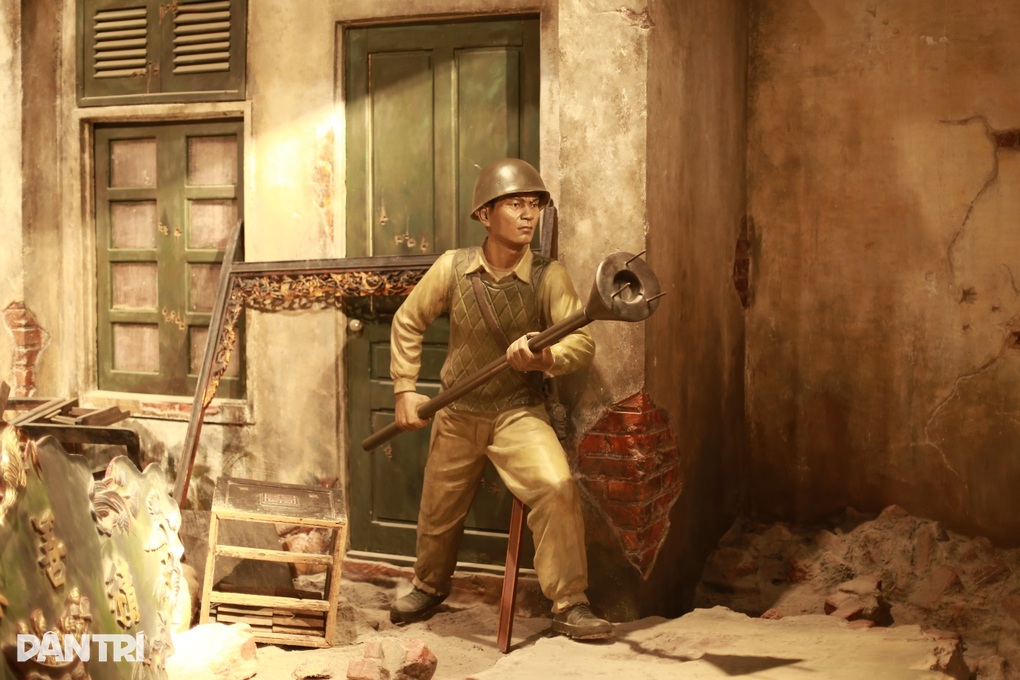
The image of a soldier protecting the capital with a three-pronged bomb is recreated at the Vietnam Military History Museum (Photo: Phuong Mai).
Young men and women of 36 streets joined the National Guard, the Volunteer Police, the Self-Defense Forces... to fight the French in response to President Ho Chi Minh's call for national resistance.
The battle was unequal. The Viet Minh troops with rudimentary and meager weapons fought fiercely against the well-trained French army from the very beginning.
At that time, the entire Hanoi front, including the self-defense force, the Viet Minh had about 2,000 guns with little ammunition.
Each Viet Minh battalion had only 2 to 3 machine guns, 2 to 3 submachine guns and carbines, the rest were all rifles. Ammunition was lacking, grenades were few, and some bombs did not explode.
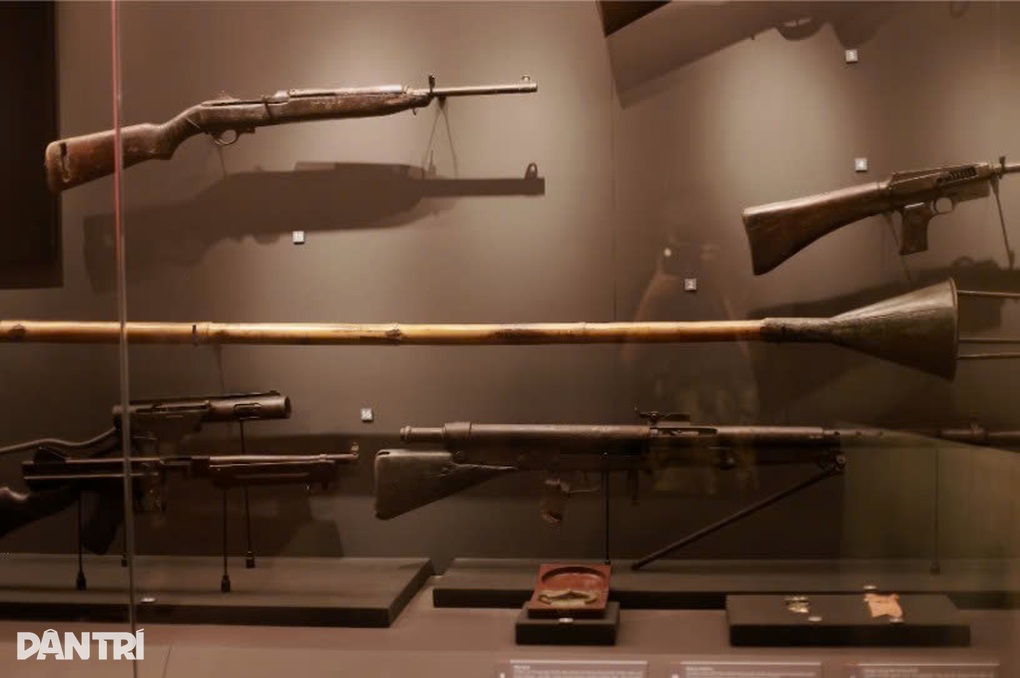
Tripod bombs were used by the Capital's suicide troops against French tanks in the early days of the National Resistance War, December 1946. The artifact is currently on display at the Vietnam Military History Museum (Photo: Phuong Mai).
"Each squad only had 3 to 4 rifles, the rest were mostly machetes. In combat, the Viet Minh soldiers were creative, using gravel bottles and lime powder bottles to attack infantry, and using cannons and small cannons to deceive.
In the early days of the national resistance war, the image of the capital's suicide soldiers using three-pronged bombs to attack French tanks became a symbol of courage and determination to defeat the French invaders in the days of death for the country," according to information from the National History Museum.
Early anti-tank weapons

The front part of a tricycle bomb. The artifact is on display at the Vietnam Military History Museum (Photo: Phuong Mai).
According to the National History Museum, the tricycle bomb is a type of anti-tank weapon produced by the Vietnamese military arsenal in 1946.
The three-pronged bomb was designed with an impact detonator based on the principle of a hollow-point warhead, not too complicated to manufacture, so it was suitable for that time.
The bomb is funnel-shaped, filled with explosives or bomb powder (7–10 kg), with a cast-iron rim attached to three iron claws.
The bottom of the funnel is the explosive part, including: explosive charge, firing pin and safety pin. The concave area at the bottom of the cone when detonated will cause the explosion force to be directed towards the tank's steel layer.
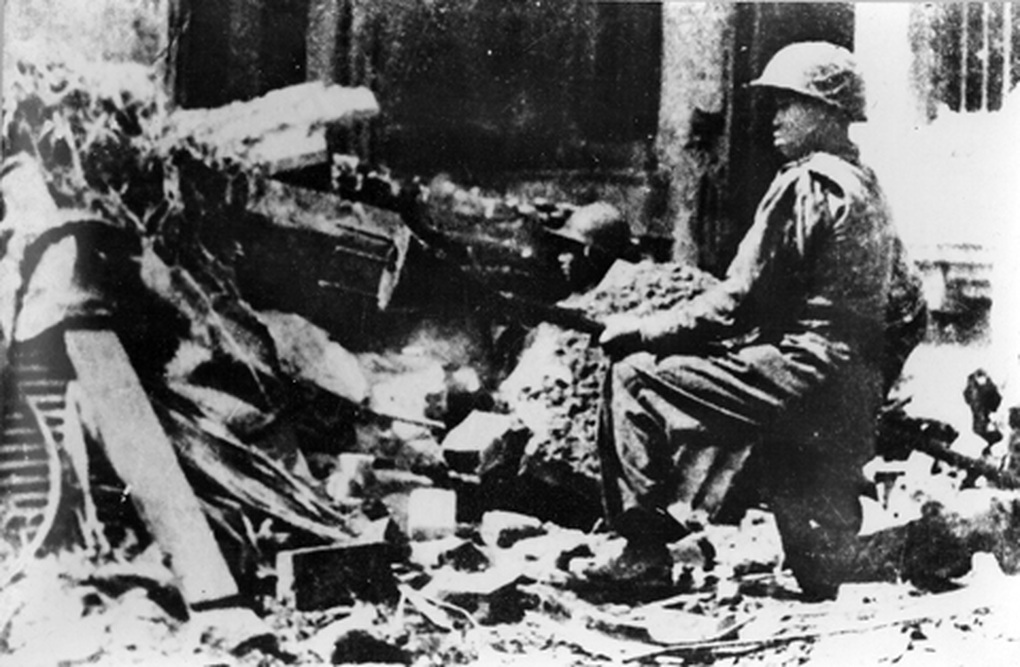
Hanoi suicide soldiers holding three-pronged bombs intercepted French tanks in the first days of the national resistance war in Hanoi, December 1946 (Photo: Archive).
"The tail of the bomb has a hole used to insert the handle about 1.2m long. People have to install 3 contact points (3 fuses) to prevent any fuse from "failing" because there are not many opportunities for suicide soldiers to approach the tank.
When bombing, the movement must be decisive, the left or right hand holds (lifts) the place where the tail of the bomb and the stick meet, the other hand firmly holds 2/3 of the stick, the bomb face is tilted 45 degrees forward.
When 2-3 meters away from the target, the soldier lowers the bomb to shoulder level, throws the bomb with both hands into the chosen position, making sure that the three bomb legs simultaneously touch the flat surface of the target (tank, armored vehicle, choose the side wall of the vehicle, under the turret...) so that the explosive device detonates accurately," the document of the National History Museum wrote.
The bomb explosion caused a very large explosion pressure (fuel and ammunition in the car were detonated together), part of the pressure bounced back and threw the bomber onto the road. The rescue team had to be ready immediately to support the bomber to a safe place.
When launching and approaching the target, soldiers must receive maximum fire support, control, neutralize firepower on motor vehicles and overwhelm and destroy accompanying infantry forces.
Bombing three-legged bombs requires soldiers who are intelligent, brave, and ready to sacrifice to complete the mission. Because the destructive power of the bomb is very large and the casualty rate is also very high.
Under conditions of shortage, difficulty on all sides, urgent time, and no effective anti-tank weapons, the three-pronged bomb was produced in limited quantities and only used in the first days of the national resistance.
Knowing that this action was extremely dangerous, and that it would require sacrifice because the whole person and bomb had to be thrown into the tank for the destructive power to be most effective, many soldiers still wrote applications to volunteer for that glorious mission, volunteering to join the "Suicide Squad".
For them, fighting to protect the capital is an honor, pride and also a sacred responsibility when the Fatherland needs it.
During the first days of fighting in the siege of Hanoi, 10 suicide squads were formed, with a total of about 100 members.
They are known as the suicide soldiers, different from the majority of other soldiers called the National Guard or Hanoi Self-Defense Forces. The suicide soldiers usually wear the garrison uniform, wear red scarves, carry three-pronged bombs, and sometimes have a live funeral before going into battle.
After 60 days and nights (December 19, 1946 to February 18, 1947) of brave, creative and fierce fighting, the army and people of the Capital fulfilled their mission of holding out, pinning the enemy in the city to protect and evacuate the revolutionary headquarters, initially defeating the French plot of a quick attack and quick victory.
The image of the capital's suicide bombers has been recorded in history books, becoming an example, a source of pride and motivation for the young generation of Vietnam to follow.
Each time a trident bomb exploded, blood was shed. But it was those sacrifices that laid the foundation for the birth of a series of more modern anti-tank weapons such as the domestic Bazooka, B40, B41, contributing to the victory over the empire.
Source: https://dantri.com.vn/khoa-hoc/hoa-khi-doi-dau-giup-bo-doi-ta-danh-xe-tang-dich-bao-ve-thu-do-20250809112402976.htm


![[Photo] General Secretary To Lam visits Kieng Sang Kindergarten and the classroom named after Uncle Ho](https://vphoto.vietnam.vn/thumb/1200x675/vietnam/resource/IMAGE/2025/10/09/1760023999336_vna-potal-tong-bi-thu-to-lam-tham-truong-mau-giao-kieng-sang-va-lop-hoc-mang-ten-bac-ho-8328675-277-jpg.webp)


![[Photo] Prime Minister Pham Minh Chinh chairs a meeting of the Government Standing Committee on overcoming the consequences of natural disasters after storm No. 11](https://vphoto.vietnam.vn/thumb/1200x675/vietnam/resource/IMAGE/2025/10/09/1759997894015_dsc-0591-jpg.webp)
![[Photo] President Luong Cuong attends the 80th Anniversary of the Traditional Day of Vietnamese Lawyers](https://vphoto.vietnam.vn/thumb/1200x675/vietnam/resource/IMAGE/2025/10/09/1760026998213_ndo_br_1-jpg.webp)















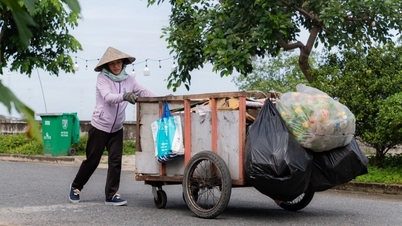
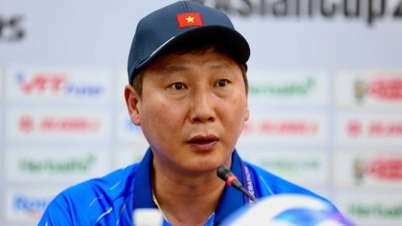




































































Comment (0)